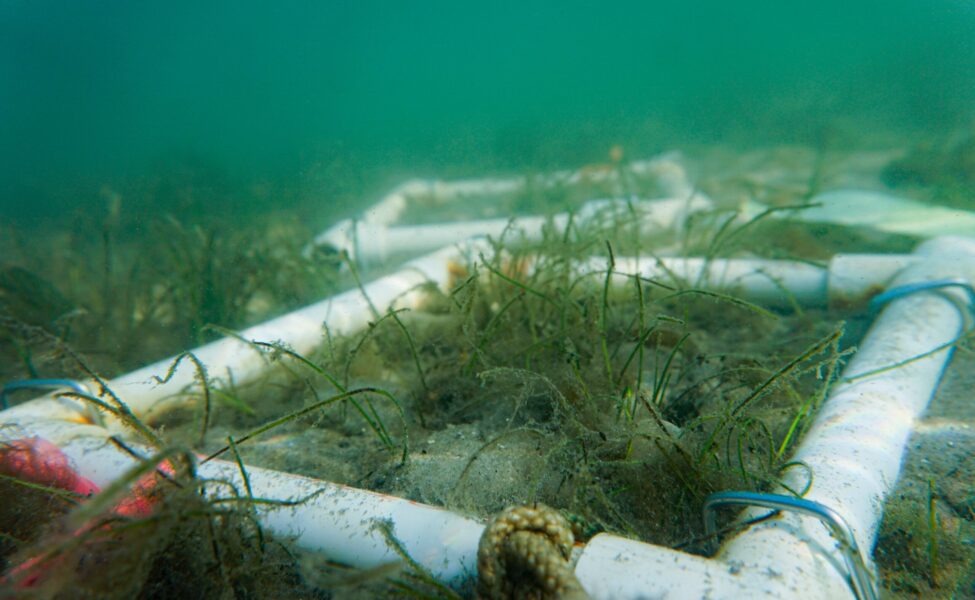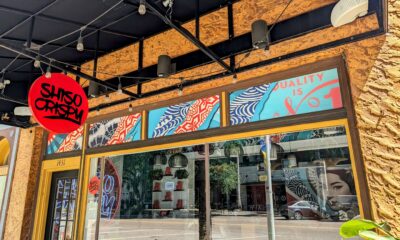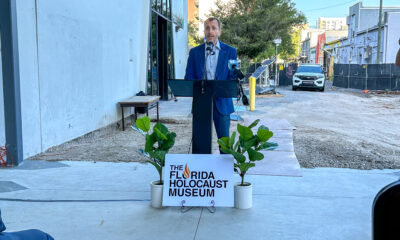Thrive
Significant seagrass loss alarms researchers

Seagrass is critical to the abundance of life found in Tampa Bay, and the recent loss of 4,161 acres underscores a disturbing trend causing concern among researchers.
According to mapping results released Monday by the Southwest Florida Water Management District (SWFWMD), Tampa Bay has endured seagrass losses for three consecutive study periods for the first time since biennial tracking began in 1988.
In addition, coverage in Old Tampa Bay is now at an all-time historic low.
Data shows that the entire bay lost 12%, or 4,161 acres, of its seagrass between 2020 and 2022. Florida’s largest open-water estuary is now home to 30,137 acres total, about a 30% drop since restoration efforts led to a peak of over 41,000 acres in 2016.
“I’m very concerned,” said Maya Burke, assistant director of the Tampa Bay Estuary Program (TBEP). “I do not like being a resource manager in charge of protecting Tampa Bay and seeing all-time historic low coverage of seagrasses in Old Tampa Bay, in particular. And it’s certainly not fulfilling to see losses throughout the bay.”
Old Tampa Bay comprises the northernmost portions of the estuary, including the areas around the Courtney Campbell Causeway and the Howard Frankland and Gandy Bridges. According to the report, the bay’s upper portions are more sensitive to freshwater inflow and stormwater runoff.
Old Tampa Bay lost 38% of its seagrass between 2020 and 2022, while Hillsborough Bay, just south of downtown Tampa, lost 51%.
Scientists at SWFWMD coordinate aerial surveys to estimate seagrass coverage every two years in winter when bay waters are clear. They then plot, analyze and verify the digital imagery, and TBEP also conducts a monitoring program that complements SWFWMD’s mapping.
Burke explained that Old Tampa Bay experienced losses for several years, and persistent harmful algal blooms are one culprit. She said the dinoflagellate Pyrodinium bahamense limits light in the summertime seagrass growing months, essentially starving the plant.

A harmful Pyrodinium algal bloom in Old Tampa Bay. Photo by Dorian Photography.
In addition, she said large flood control structures like the Lake Tarpon Outfall Canal deliver more nutrients through stormwater water runoff. Wetter weather and increased temperatures exacerbate the problem, while the bridges impede critical tidal circulation.
“So, I don’t think there’s one smoking gun,” Burke said. “I think we’re sort of in a complex gray area of lots of things working together for periods of loss for seagrasses in Tampa Bay. “
Burke noted researchers are particularly interested in seagrass losses along the southeastern shore of Middle Tampa Bay, from Apollo Beach towards Port Manatee. In April 2021, state officials released millions of gallons of contaminated wastewater into the bay from the nearby Piney Point fertilizer plant to prevent a reservoir leak from flooding surrounding neighborhoods.
Scientists conducted the study after the release, and a subsequent massive red tide outbreak, but before Hurricane Ian caused a negative storm surge in September. Areas closest to Piney Point showed a concentrated decline in seagrass beds.
Burke relayed that water managers typically view areas around St. Petersburg – Lower Tampa Bay and Boca Ciega Bay – as “generally pretty stable.” She also expressed her hope that lower bay segments are not just “a couple of steps behind” the upper portions.
“I think the important thing to note is it’s a trend at this point,” she explained. “That’s the notable thing about it happening for three assessment periods in a row.”
In November 2022, J.P. Brooker, the St. Petersburg-based director of Florida conservancy for the Ocean Conservancy, said the loss of seagrass beds and poor water quality was starving a “staggering” number of manatees. The state lost 24% of its total population in less than two years.
While Brooker noted that most manatee deaths occurred on the east coast, around the Indian River Lagoon, he said, “it won’t take much seagrass loss on the Southwest Florida Coast or in Tampa Bay to see those impacts over here.”

A Tampa Bay Estuary Program researcher conducts seagrass sampling around Fort De Soto. Photo provided.
There is hope. Burke said she has previously seen stakeholders come together and make significant investments to protect the region’s most valuable resource. All bay segments met TBEP’s water quality targets last year, which supports seagrass growth.
However, she said environmentalists face “a heavy lift,” and managing nutrient pollution is just one aspect of protecting the bay. They must also address compounding stressors like the reduction in tidal flows, freshwater intrusion and a changing climate.
“So, I’m hopeful,” Burke said. “But I’m not Pollyannaish about the level of work that’s before us.”








Bob Kish
February 15, 2023at9:52 pm
The FL legislature needs to ban the use of fertilizers within so many miles of our coastline in order to preserve sea life , our fisheries, tourism and remove the nutrients that feed toxic algae blooms. This distance needs to be determined by scientists based run off absorption rates, storm flows and topography.
It’s a bitter pill to swallow for golfers and people that want beautiful lawns but its critical to improving water quality and preserving FL waterways and sea life for generations to come. NJ coastal waters have become an oxygen depleted “dead zones” and there’s very little sea life left in the bays. FL will end up like NJ if we don’t act soon.
Bayway Alliance
February 15, 2023at2:24 pm
Much can be done by homeowners to protect and promote Seagrass areas with Grant money or free Aids to warm boaters of the delicate areas to avoid. Unfortunately any “Private” homeowners are denied accessibility to Funding for these projects.